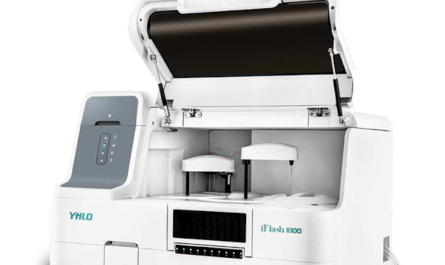Miniaturized Sensors for Continuous Monitoring
A key goal of smart patch developers is minimizing the size of sensors to create discreet and comfortable devices. Major technology companies and startups are leveraging miniature electronics to build patches that seamlessly integrate vital sign monitoring into everyday wear. Miniaturized sensors allow for continuous data collection without disrupting users. Patches can now contain arrays of nanoscale sensors and chips similar in size to a adhesive bandage.
Companies are leveraging MEMS (microelectromechanical systems) technology to build extraordinarily small sensors. Using microfabrication techniques, researchers can construct incredibly tiny accelerometers, thermometers, pulse oximeters and other instruments on integrated circuit chips. This has enabled building multi-sensor arrays into Wearable Patch smaller than a quarter. Miniaturization is critical to facilitate convenient long-term wear and accurate readings.
Interconnected Sensor Networks
Another advancement is leveraging wireless connectivity between sensors to create interconnected networks. Instead of single standalone sensors, researchers are designing patches with sensor modules that can communicate with each other. For example, a patch may contain a cluster of temperature, ECG and motion sensors networked together. The sensors work cooperatively to gain a fuller picture of the user’s condition.
This networked approach provides advantages over single sensor solutions. Distributed sensor networks can detect subtle changes across different vitals that may indicate an emerging health issue. The data from multiple sensors also increases confidence in detecting true physiological signals versus noise or errors. Researchers are further enhancing connectivity by adding radios like Bluetooth and WiFi to transmit readings to smartphones or the cloud. Interconnected intelligence promises to revolutionize continuous patient monitoring.
User-Friendly Designs
Design Wearable Patch that are comfortable to wear for long durations is another major research objective. Early prototypes were often obtrusive and not suitable for regular daily wear. Scientists are now heavily focused on ergonomic designs that blend seamlessly into users’ lives.
Some novel designs integrate sensors directly into clothing fabrics or resemble decorative ink tattoos. Invisible to others, these “second skin” patches comfortably stick to the body for weeks without bothering the user. Additional innovations like stretchable electronic skins and self-charging capabilities further enhance wearability.
Companies also aim to make patches aesthetically appealing with minimalist styles. Subtle patches resemble standard bandages or beauty patches versus bulky medical devices. Sleek designs allow for discreet use without drawing unnecessary attention. Both fashion and function are considered to encourage voluntary long-term adoption.
Medical and Consumer Applications
Patches show strong potential in both consumer health and clinical settings. In healthcare, they may alleviate staffing shortages by enabling remote patient monitoring. Clinicians could closely track vitals of vulnerable populations like the elderly outside of hospitals and clinics. Smart patches may assist with postoperative recovery, chronic disease management and more.
Consumers are also driving research with a growing emphasis on preventative healthcare and wellness. Patches seamlessly track fitness stats, sleep cycles and other daily metrics. Their accessible form-factor lowers barriers to health tracking. Data streams could alert users to subtle changes, empowering proactive care. Wellness patches may offer passive insights into conditions like hypertension, diabetes and stress outside doctor visits.
However, hurdles remain around long-term data management, privacy concerns and regulatory approval for medical diagnosis. Yet with ongoing miniaturization and technological enhancements, wearable patches are poised to transform medical monitoring and self-care. Their potential to passively and continuously sense our bodies promises unprecedented health insights.
Reliable Biosignal Detection
Achieving consistent, reliable biosignal detection even during strenuous activities remains a significant challenge for patches. Early prototypes demonstrated inaccuracies in motion or unstable readings due to factors like poor skin contact. Researchers are enhancing sensors’ signal processing and using advanced algorithms for motion compensation.
Motion artifacts have long plagued wearable monitoring due to sensor movements relative to the skin. Some patches now include multiple ECG electrodes arranged in weird configurations and coupled accelerometers to better discriminate physiological signals. Additional techniques like signal smoothing filters and multivariate empirical mode decomposition provide robust signals.
Other approaches compare sensor responses under motion to mathematically model artifacts based on acceleration profiles. Patches seamlessly integrate gyroscopes and magnometers for analyzing subtle motions beyond basic accelerations. Machine learning algorithms further enhance filters by recognizing patterns between motion and corrupted biosignals. These techniques empower patches to maintain high accuracy even during exercise or daily living.
Long-Term Power Supply
Power management remains another critical challenge, as patches must continuously operate for weeks without recharging. Batteries significantly impact form-factor, lifespan and manufacturing costs. Researchers are investigating green options like motion-powered energy harvesting, thermoelectric generation and wireless recharging.
Some patches incorporate ultra-thin flexible batteries constructed from materials like lithium-ion electrolyte gels sealed between stretchable substrates. These deformable power sources conform to complex body contours without compromising wear-ability. Combined with low-power sensor electronics and intermittent data transmissions, they can power patches for 10 days or more of continuous use.
Alternative solutions draw power directly from body heat or motion using solid-state energy harvesting films. Piezoelectric nanogenerators convert small movements like breathing or blood flow into microwatts of electricity. Combined thermoelectric and pyroelectric modules also scavenge minimal heat differences between the skin and ambient air. While individually providing negligible amounts, scaling up multi-source arrays could theoretically replace batteries. Wireless charging further enhances flexibility by allowing inductive recharging through clothes from portable pads or smartphone backings. Continuous power promises to eliminate recharging barriers to routine wear.
Wearable patch are rapidly advancing through refinements in miniaturized sensing, ergonomic designs, reliable biosignal processing and long-term power autonomy. These technologies address core challenges limiting widespread adoption. With growing clinical validation and consumer pull, patches are positioned to profoundly impact personal health monitoring and medical care delivery. Their potential to passively and continuously track physiological metrics promises new frontiers in preventive healthcare.
Money Singh is a seasoned content writer with over four years of experience in the market research sector. Her expertise spans various industries, including food and beverages, biotechnology, chemical and materials, defense and aerospace, consumer goods, etc. (https://www.linkedin.com/in/money-singh-590844163)
*Note:
1. Source: Coherent Market Insights, Public sources, Desk research
2. We have leveraged AI tools to mine information and compile it



